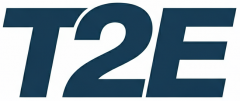CIOs play a critical role in leading IT operations within most organizations. As such, they must stay ahead of the ever-increasing pace of change in the industry. While change has always been a constant in IT, the speed at which it occurs has accelerated significantly. CIOs need to keep up with this rapid evolution. It requires CIOs to be well-prepared to understand, evaluate, and implement changes that bring value to their organizations.
Importance of Staying Ahead of Industry Changes
Staying ahead of industry changes is essential for the success of any organization’s IT operations. This is particularly true in today’s fast-paced, highly competitive, and ever-evolving business landscape, where technology acts as both a driver and a disruptor of growth.
Firstly, staying updated on industry changes allows CIOs to identify emerging technologies and trends that can give their organization a significant competitive advantage. By continuously monitoring shifts in the industry, they can anticipate market demands and stay one step ahead of their competitors. Proactively implementing new solutions that enhance operational efficiency, streamline processes, or drive innovation can not only help organizations meet customer expectations but also exceed them, building lasting brand loyalty.
Additionally, keeping up with industry changes enables CIOs to mitigate potential risks before they escalate.
With every new technological advancement comes the possibility of new security threats, vulnerabilities, and compliance challenges that could jeopardize an organization’s operations. By being aware of these risks and understanding how they align with current trends, CIOs can take necessary measures to fortify their organization’s systems, secure critical data, and meet regulatory requirements. This proactive approach to risk management builds resilience and fosters trust with customers and stakeholders alike.
Moreover, staying ahead of industry changes allows CIOs to ensure their organization remains flexible and adaptable. As technology continues to evolve at a rapid pace, businesses must be prepared to pivot quickly in response to shifting market conditions or customer needs. A strong understanding of industry changes equips CIOs to make informed decisions, seize opportunities for growth, and lead their teams through the successful implementation of new strategies, tools, and technologies. This adaptability can position an organization as a leader in innovation, capable of thriving even in uncertain or volatile markets.
Finally, staying current with industry changes fosters a culture of continuous learning and growth within the organization. When CIOs embrace the importance of staying informed, they set an example for their teams, encouraging employees to remain curious and open to adopting new practices. This culture not only boosts employee engagement and skill development but also ensures the organization is always ready to tackle future challenges head-on.
Strategies for Staying Ahead
To keep pace with evolving industry trends, CIOs can leverage several effective strategies:
- Attend Industry Events: Participating in conferences, seminars, and trade shows dedicated to technology offers valuable insights into emerging trends and innovations shaping the future.
- Build a Strong Network: Cultivating relationships with fellow IT leaders fosters the exchange of ideas and keeps CIOs informed about the latest developments across the industry.
- Commit to Continuous Learning: Staying informed about new technologies and their potential impact requires a proactive approach to ongoing education and skill development.
- Collaborate with Vendors: Establishing strong partnerships with technology vendors can provide early access to cutting-edge products and solutions, offering a competitive edge.
Additionally, CIOs can tap into the expertise of their teams to stay in sync with industry changes. By fostering a culture of continuous learning and encouraging team members to share their insights, organizations can remain agile and prepared for the next transformative shift in the tech landscape.
Conclusion
In today’s fast-paced business landscape, CIOs need to keep up with the pace of industry changes. By doing so, they can identify opportunities for innovation, mitigate risks, and adapt quickly to changing market conditions. With the right strategies in place, CIOs can position themselves as valuable assets to their organizations by leading the way in implementing new technologies and driving business success. So, it is important for CIOs to prioritize staying informed and continuously learning in order to stay ahead of industry changes. By doing so, they can drive their organizations towards success in a rapidly evolving technological landscape.
Click here for a post on how to transition from a tech leader to a CIO.
You may also like:








